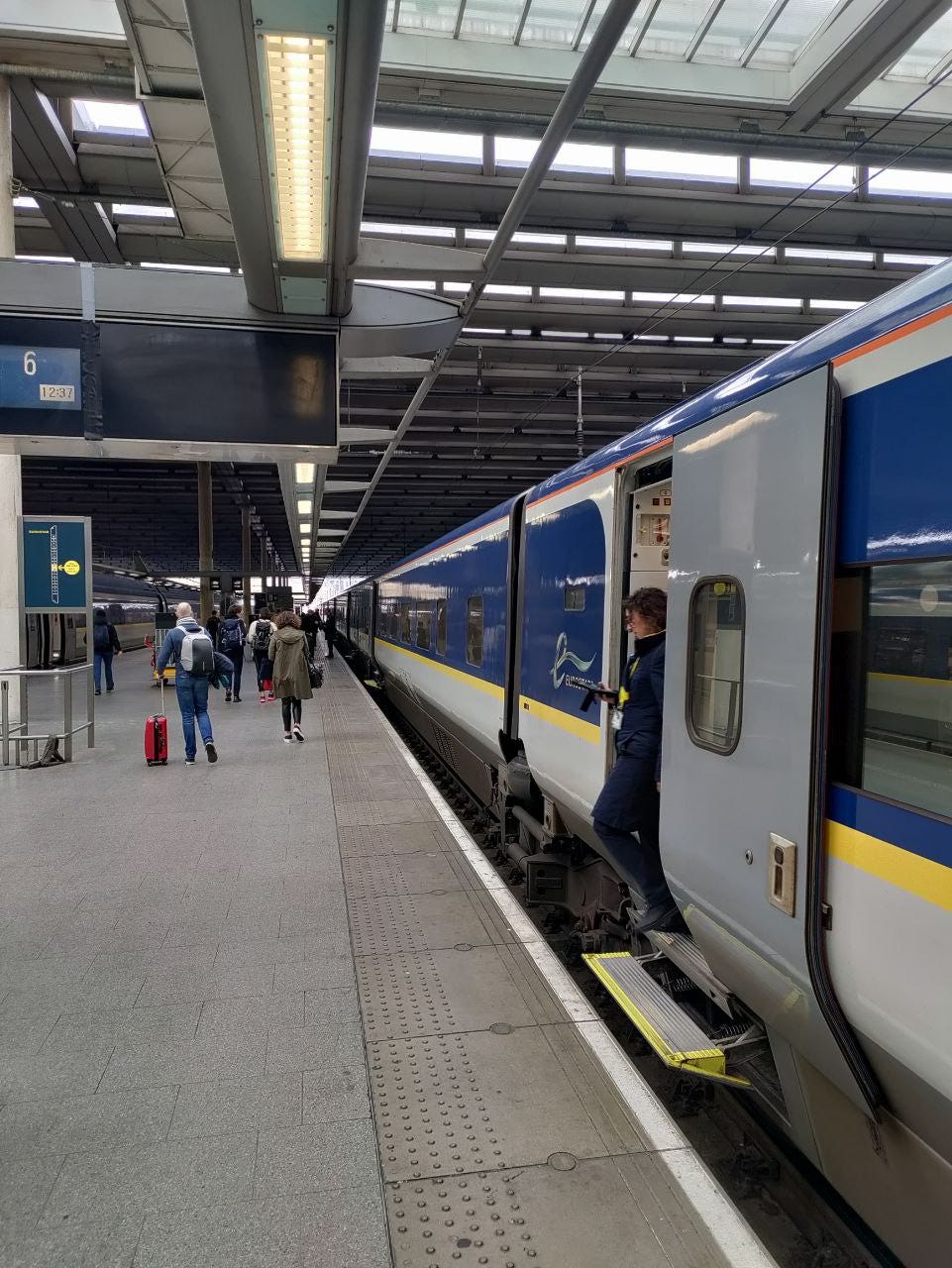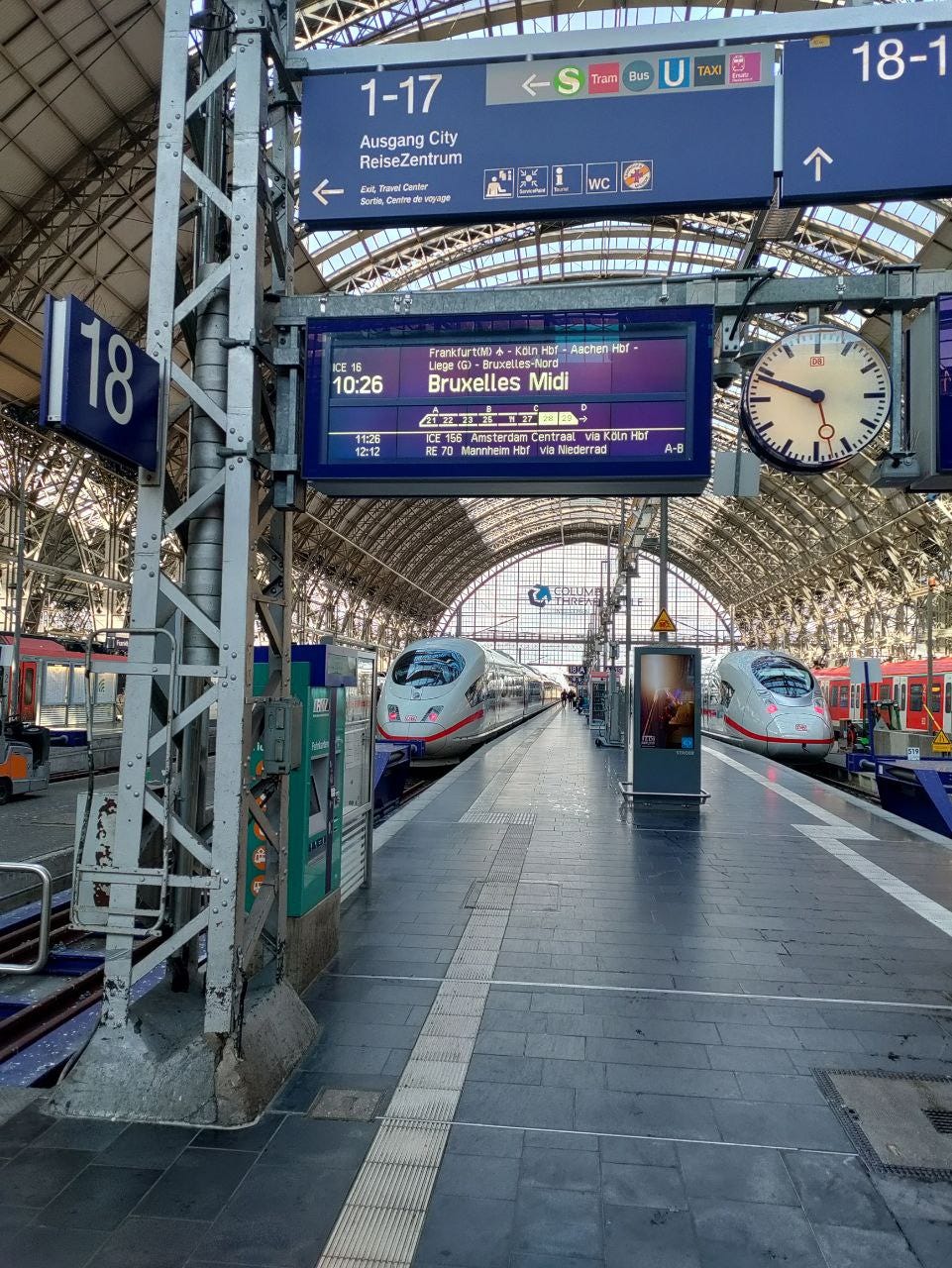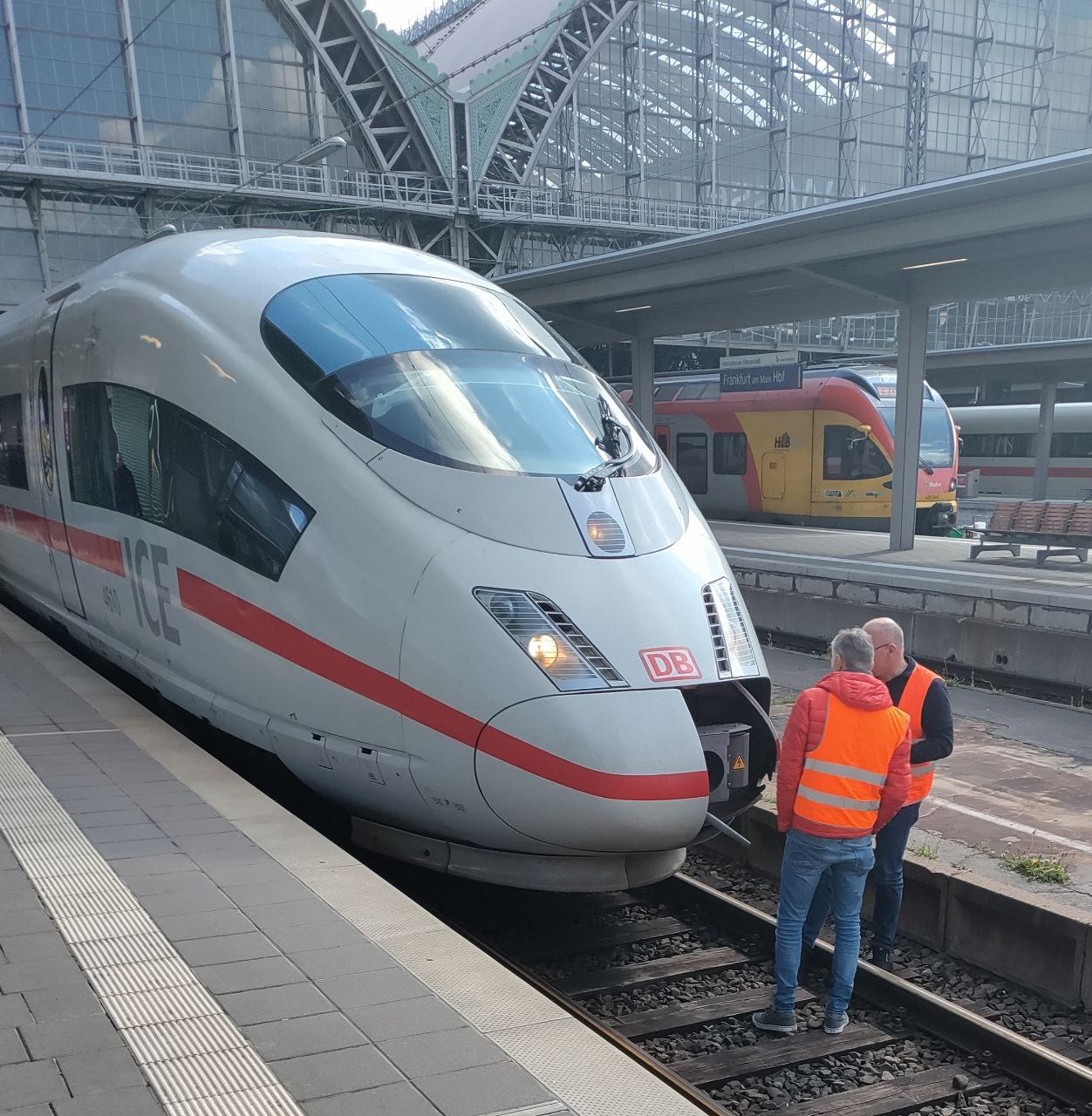Recently, I travelled from York in the UK to Southern Germany by train. This was a deliberate attempt to avoid flying, travel in a more environmentally friendly way and - well, just try something different.
I used to do long distance train journeys a lot, being old enough to remember things like the Alfred Nobel night train from Stockholm to Hamburg, or the 8-9 hours trek from Southern Germany to the Baltic before the new high speed railway lines were built. But lately - and since flying became so much cheaper - I haven’t really taken the train for trips longer than 2-3 hours at the most.
Price wise rail travel within Europe works out cheapest with an Interrail ticket - these are available for a set number of days within which you can add your own journeys very easily in the app - even change them while you are already under way but want to swap to a different connection because of a delay or - well because you feel like stopping somewhere unplanned that looks nice.
Because I’m rather tall and this was a long journey, I opted for first class - which on a 4 day Interrail pass only adds about £50, which is good value for the extra legroom and treats you get on the way. It also means that as a single traveller you normally get to sit alone as all these trains have 1:2 seat layouts in first class as opposed to the normal 2:2.
Apart from the German ICEs, high speed trains do tend to require a separate seat reservation when you travel with a pass - which on French and Belgian trains (including the Eurostar) can be a little pricey (about 35 Euros).
This post isn’t primarily about how my trip went - that was a mixed experience with a longish delay on the way down that led to some missed connections and a rather long trip. On the other hand, the return trip could not have been more smooth. Instead, I want to compare the travel experience between the three different high speed trains. I will be looking at speed, comfort and service. Obviously, having travelled first class, some of this will differ in standard class - but most things will still be relevant. So let’s set off.
LNER Azuma
I took this train between York and London Kings Cross. There was some confusion and delays because of an incident North of York that caused some stress, but in the end the train ran and wasn’t more delayed than that I easily caught the Eurostar. The Azumas are relatively new trains, only introduced a few years ago, giving them the advantage of still feeling rather fresh. The seats are comfortable - indeed they are the comfiest of all three trains. The only downside is the fixed tables that cannot be folded away which can be somewhat in the way when you’re tired and just want to curl up.
LNER requires seat reservations for Interrail travellers, but if booked through the LNER app these are free of charge.
The Azumas aren’t the fastest snails in the lettuce, reaching only about 125 mph (200 km/h), but as many of them don’t stop between York and London the journey still feels rather quick with a travel time of less than 2 hours.
The LNER service in first class is extraordinary. There are free drinks and there is a proper menu with food options depending on the time of day. The food is served to your seat in proper china cups, bowls and plates - no airport style trays and plastic packs. The portions are not huge but the food is very good. My dinnertime option was a chickpea curry followed by a sticky toffee pudding. And in first class this is all included in the price - you can even get a glass of wine with it.
Eurostar
The Eurostar travel experience is to a degree let down by the check in procedure which is very airport like - something that is really not great when you are offering a service that is marketed as a less faffy alternative to flying. There is a check-in queue and a security check just like at an airport. And of course, there is also a border with double passport checks (UK and Schengen), but I can’t really blame Eurostar for it as this is due to UK politics and nothing they can do anything about. At least having both borders only at the departing station speeds things up somewhat at the other end. There is still a customs checkpoint though - which can make transferring to a connecting train a challenge at Bruxelles Midi - even if you do not actually get asked to open your bags.
One good thing with this procedure though is that Eurostar requires passengers to arrive with plenty of time to spare and closes the platforms some time before the train departs, so the service tends to be very much dead on time.
The Eurostar trains (there are two different types but they are very similar) are not brand new any more but still feel pretty fresh. The seats are not as comfortable though, with oddly high back rests - and for a tall person like me that’s really an unusual thing to notice. One thing that wasn’t great are the toilets. Train toilets are a challenge in the first place, but the Eurostar had the worst ones of all the three trains. Small, dirty and in one instance - proper smelly.
Service on the Eurostar is very aeroplane like, at least in premier class - as they call it. You get a meal on a tray, drinks and coffee, just the same as in the air. The food is nicer tough. One example is a chicken and lentil concoction that looked a bit odd but was actually really tasty.
The Eurostar is proper fast, maxing out at 275 km/h (170 mph), and the ride feels smooth and comfortable.
ICE
The ICE network is Europe’s largest network of high speed trains, not only covering Germany, but extending into many neighbouring countries. There are at least 3 generations of ICE trains and they have been around since 1991. In theory, the ICEs are the fastest trains in Europe, having reached over 400 km/h (248 mph) in trials, but in regular service they rarely reach speeds over 300 km/h (186 mph). The speed also depends on where they run, there are several dedicated high speed lines in Germany where the ICEs do not share tracks with other trains and only on those the really high speeds are reached. In fact, the fastest speed I travelled was just around 265 km/h (164 mph) making it slightly slower than the Eurostar.
The ICE network is extensive, and for Germans these are not truly exclusive trains. No seat reservations are required and sometimes the trains get so busy that people end up sitting on the floor - even in first class! In fact, the only thing that feels like a first class upgrade is the single seats and wider leg room. The seats themselves are rather hard and the whole design feels a little plasticy and cheap. But so do these trains also offer the most affordable high speed travel of the three - and maybe in all of Europe, as the French TGV and Belgian Thalys also have mandatory - rather costly - seat reservations.
There is no free food or drinks - even if first class, so there is nothing to review about the service. There is a restaurant car though where drinks and snacks can be bought. The toilets, oddly, are the best of the three - and there are more toilets than on the other trains.
So who is the winner?
Maybe surprisingly for some, the LNER Azuma wins hands down. The only downside is really the comparatively slower speed, but on all other accounts there is no doubt. These trains are the comfiest, the service is best and the general experience is the most pleasant.
The British railways suffer from a lot of problems these days, but in my opinion their reputation is worse than they deserve. The problems with reliability and cancellations are not unique to the UK - I saw a lot of cancelled German trains, too and a lot of them are delayed. And actually, Germans are rather critical of the DB at the moment - and they are as pleasantly surprised to hear that the British railways have similar problems - just as surprising as it will be for many Brits to hear that the reputable German railways also suffer from strikes and delays due to technical faults.
The one big difference though is that Germans are more happy to put up with it and use the railways anyway - because they are so much cheaper - and trains are so much more frequent that they get where they need to be still quicker and at a lower cost than taking the car. And that’s were the UK needs to make some changes if it wants people to travel in more environmentally friendly ways.








